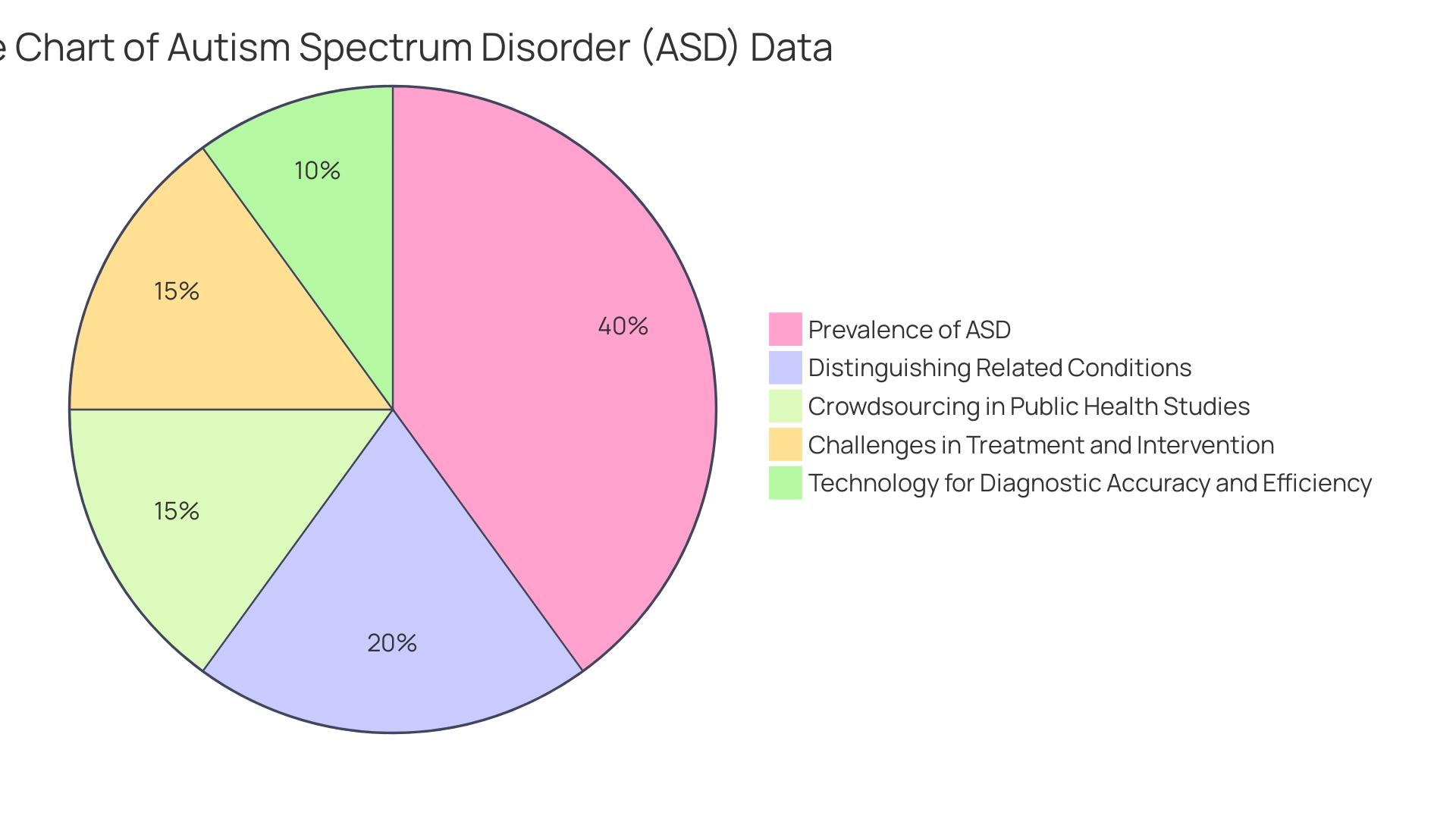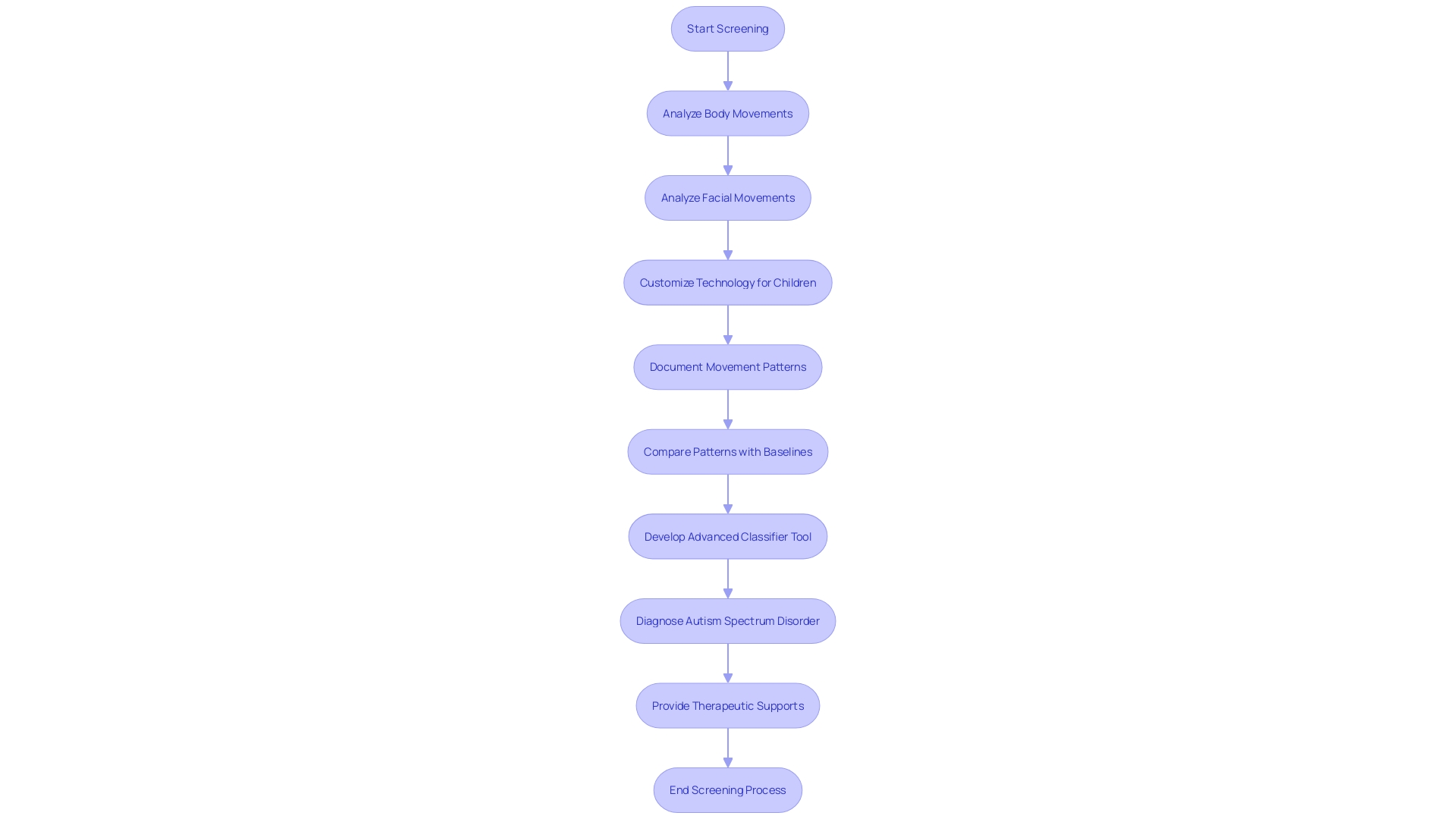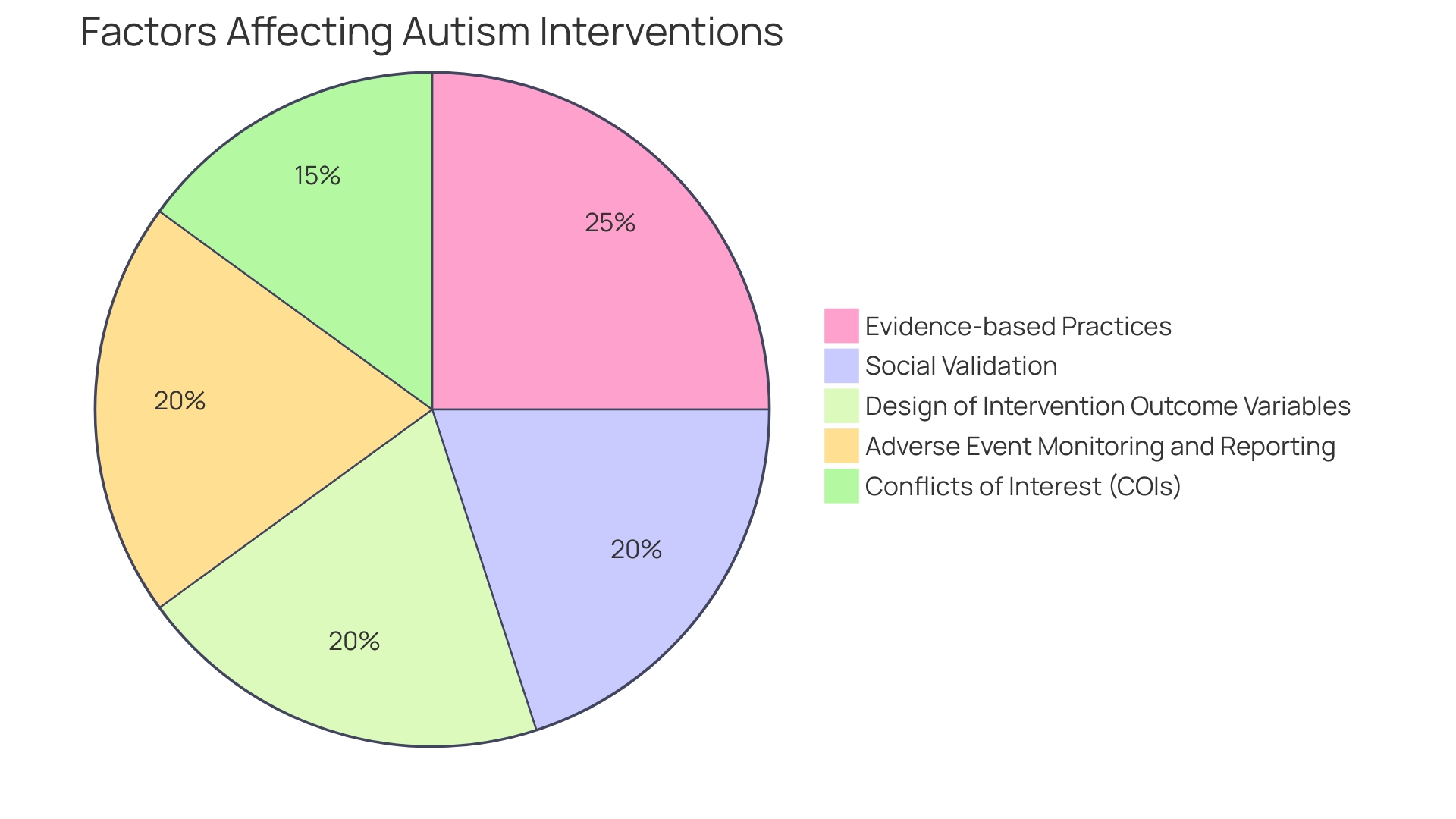Introduction
Recognizing autism early in life is crucial for a child's development and future well-being. The sooner autism is identified, the quicker parents and healthcare professionals can begin tailored interventions and support, leading to improved life outcomes. With advancements in technology, there is new hope for identifying autism with nearly 80% accuracy in children under two years old without extensive medical assessments.
These developments can streamline the diagnosis process and provide much-needed support sooner during a child's critical developmental phase. Traditional screening methods have limitations, highlighting the necessity for innovative, objective screening tools. By understanding the interplay between genetic and environmental factors in autism's development, we open doors to early and optimal intervention strategies.
In this article, we explore the importance of early detection of autism, the limitations of traditional screening methods, the role of digital phenotyping in autism screening, and the benefits and challenges of early diagnosis and intervention. We also discuss future directions in autism diagnosis and screening, highlighting the potential of technology to transform the diagnostic process and improve the lives of children and their families.
Importance of Early Detection of Autism
Identifying the condition at an early stage in one's early years is crucial for the growth and future welfare of an individual. The sooner the condition is identified, the quicker parents and healthcare professionals can begin tailored interventions and support, leading to improved life outcomes. With advancements in technology, such as machine-learning models like 'AutMedAI', there is new hope for identifying autism with nearly 80% accuracy in individuals under two years old without extensive medical assessments. These advancements can expedite the diagnosis process, which is frequently hindered by the requirement for clinical assessment of behavioral displays, and offer essential support earlier during an individual's crucial developmental phase. Traditional tools like the M-CHAT-R/F, while useful, have been less accurate outside of research settings, highlighting the necessity for innovative, objective screening methods. The timely detection and subsequent prompt intervention can greatly enhance an individual's ability to live independently later in life, given that only a small percentage of individuals diagnosed with autism before the age of five can do so. By comprehending the interaction between genetic and environmental factors in the development of this condition, we unlock opportunities for timely and optimal intervention approaches.
Traditional Methods of Autism Screening
While traditional autism screening has been foundational in identifying symptoms in children, it often hinges on observations and feedback from parents and caregivers. The advent of innovative techniques is set to revolutionize this process with early and more accurate detection methods. Groundbreaking research is integrating a parent-child block-play protocol with an advanced attention-enhanced deep learning framework to analyze social and cognitive development in play sessions. This combination promises to unearth patterns indicative of Autism Spectrum Disorder (ASD) with greater efficiency than past assessments.
The DSM-5 criteria have been a staple for diagnosing ASD, but dependence on subjective observations raises concerns about misdiagnosis and emphasizes the necessity for additional objective methods. Recent technological strides, including the SenseToKnow application developed by Duke professors Geraldine Dawson and Guillermo Sapiro, exemplify this shift. By capturing a child's reactions to tablet-displayed stimuli, the app utilizes AI algorithms to discern potential ASD traits, thereby enhancing diagnostic precision and confidence levels.
Moreover, organizations like The Autism Community in Action emphasize the importance of intervention, advocating for tools that can identify ASD soon after birth. The creation of machine-learning models like Aut Media, which can precisely identify the condition in almost 80% of cases before the age of two, is evidence of the advancements being achieved. By analyzing parameters obtainable without extensive tests, these models offer a promising future for the detection of autism at a young age, ultimately improving the quality of life for individuals impacted and their families.
Limitations of Traditional Screening Methods
Innovative approaches in screening for individuals with special needs are revolutionizing early detection, with groundbreaking tools like the SenseToKnow app, developed by Duke professors Geraldine Dawson and Guillermo Sapiro. This app engages toddlers with movie clips that trigger an array of behaviors indicative of a developmental disorder, such as social attention variances, facial expressions, and motor skills, which are analyzed by an AI algorithm. The Ai's analysis, using computer vision, evaluates the probability of a developmental disorder with a quantified level of confidence, providing a nuanced and efficient alternative to conventional screening.
Furthermore, research teams are utilizing machine learning models, like AutMedAI, that have shown an impressive 80% accuracy rate in identifying children with developmental disorders under two years of age. This is accomplished by analyzing non-invasive parameters available before 24 months, signifying a monumental step towards early and accurate diagnosis of the condition.
These advancements, celebrated by organizations like The Autism Community in Action, emphasize the critical need for timely interventions. With the potential to provide diagnostic clarity shortly after birth, these instruments are ready to significantly decrease the prolonged diagnostic journey many families endure. As expressed by Kristiina Tammimies from the Karolinska Institutet, the objective is to transform these resources into valuable assets for healthcare providers, ultimately enhancing the results for individuals diagnosed with autism spectrum disorder.
New Technologies in Autism Screening: Digital Phenotyping
Integrating digital resources into the autism screening procedure can transform our comprehension and detection of autism in young children, especially those as young as three years old. With traditional methods often providing inaccurate results, leading to false diagnoses and unequal access to early interventions for certain demographics, the cutting-edge work of the Cook lab, in collaboration with Healios, aims to bridge this gap. They have created digital instruments that concentrate on capturing body and facial movement data to establish a more child-friendly and unbiased screening process.
These digital instruments have the potential to revolutionize current practices, which are typically based on subjective clinician interpretations and parental reports. Instead, these tools offer a more objective and quantifiable approach. For example, the SenseToKnow app, developed by Duke professors Geraldine Dawson and Guillermo Sapiro, utilizes tablet-based software to record a child's reactions to specific stimuli. The app measures a wide range of behaviors related to a specific developmental disorder, such as social attention and motor patterns, using computer vision analysis. This data is then processed by AI algorithms to determine whether the behavioral patterns align with those typically seen in individuals with the condition.
Moreover, recent advancements in machine learning have shown promising results. A study leveraging the SPARK database, which contains information on around 30,000 individuals, utilized machine learning models to sift through 28 parameters. These models, including the renowned Auto Media, have shown an impressive 80% accuracy rate in identifying individuals below the age of two years without needing extensive medical assessments.
The urgency to find reliable, efficient screening methods for individuals with autism is echoed by organizations like The Autism Community in Action (TACA), which supports thousands of families across the United States. A precise and timely diagnosis is essential as it sets the stage for timely interventions that can greatly enhance long-term results for individuals with autism spectrum disorder. The development of these digital phenotyping tools could eventually lessen the diagnostic journey that families often face, which can extend over several years before confirming a disorder within the spectrum of ASD. This is particularly crucial for families with a higher risk due to a previously affected individual.
As we advance towards more accurate, efficient, and accessible methods of screening for autism spectrum disorder (ASD), it is essential to continue supporting research and development in this area to ensure that every individual has the opportunity for early diagnosis and intervention, which are crucial for better outcomes.
How Digital Phenotyping Works
Digital tools and machine learning algorithms are revolutionizing the way we comprehend and tackle the condition of autism in young individuals. By leveraging a variety of sensors, these technologies can meticulously track and analyze a child's day-to-day actions, such as sleep patterns, speech sounds, expressions, and social engagement. By analyzing this comprehensive data, patterns and potential indicators of the condition can be identified, offering a more nuanced comprehension of it.
Significantly, the SenseToKnow app, developed by experts including Geraldine Dawson of the Duke Center for Autism and Brain Development, takes a comprehensive approach to this challenge. It uses a tablet to present movies that elicit responses indicative of a specific developmental condition, as well as engaging games to evaluate motor skills. The app's utilization of the tablet's sensors to monitor a child's reactions, combined with artificial intelligence, enables it to predict the likelihood of a neurodevelopmental condition diagnosis without the need for special calibration or equipment. This represents a leap forward in assessing a condition as complex and variable as the condition being discussed.
Furthermore, ongoing research emphasizes the importance of technology in improving detection. With the potential to identify autism in children under two with close to 80% accuracy, solutions like AutMedAI, which was developed through analyzing data from approximately 30,000 individuals, promise a new era in healthcare. These advancements are not solely focused on diagnosis; they directly influence the quality of life for those awaiting assessments and their families, by decreasing the likelihood of comorbidities and the severity of related challenges.
Furthermore, the significance of timely interventions is underscored by organizations such as The Autism Community in Action (TACA), which supports thousands of families. The start of behavioral therapies is linked to better outcomes, emphasizing the need for efficient and accurate diagnostic tools. With the ability to assist families within weeks of birth, new technologies are addressing the long and challenging process of diagnosing a developmental disorder, which is particularly crucial for families with an elevated risk due to genetic factors.
In summary, digital phenotyping and machine learning offer an empowering resource for those invested in the early detection and understanding of individuals on the autism spectrum. By capturing a wide range of behaviors, these resources reflect the variety of the condition and offer the potential to revolutionize the diagnostic procedure, ultimately enhancing the quality of life for individuals and their families.

Key Behaviors Detected by Digital Phenotyping
Breakthroughs in digital phenotyping are revolutionizing the way we approach screening, particularly for young children. Through the utilization of body and facial movement data, innovative digital resources are facilitating the identification of subtle indications that differentiate autistic behaviors from typical development. These innovative methods are not only more accessible but also promise to reduce the biases that currently plague traditional screening techniques.
Researchers have emphasized the constraints of current screening methods for individuals with this condition, such as the Modified Checklist for Autism in Toddlers-Revised with Follow-Up (M-CHAT-R/F), which exhibit a considerably reduced sensitivity in real-life environments. This deficiency is especially notable in young females and children of diverse backgrounds, emphasizing the pressing requirement for improved diagnostic methods. To tackle these challenges, Professor Jennifer Cook's lab has been at the forefront of creating child-friendly tasks that assess facial and bodily movements, which could lead to a more accurate screening tool for individuals with autism spectrum disorder.
Recent studies, such as those by Kristiina Tammimies at Karolinska Institutet and the team at Duke University, have utilized machine learning and AI to analyze behavioral patterns from large datasets. For example, the Media model correctly recognized the condition in around 80% of individuals below the age of two. Furthermore, the SenseToKnow app, developed by Duke professors Geraldine Dawson and Guillermo Sapiro, integrates responses to movie stimuli with behavioral analytics to create digital phenotypes indicative of a specific developmental disorder.
The implications for these advancements are vast, with hopes that they will streamline the diagnostic process, alleviate the financial burden on healthcare systems, and most importantly, provide earlier support for individuals with autism spectrum disorder and their families. By embracing these technological solutions, we edge closer to a future where every individual on the spectrum can receive timely and accurate interventions, tailored to their specific needs.
Accuracy and Usability of Digital Phenotyping Tools
Research led by Professor Jennifer Cook and Dr. Connor Keating, in partnership with Healios, has resulted in revolutionary digital phenotyping methods customized to improve the screening for autism in young individuals. Their innovation, which meticulously analyzes body and facial movements, addresses the pressing need for precise and equitable diagnostic tools. This is a crucial development, taking into account the prevailing customary procedures frequently result in misdiagnoses and unnecessary referrals, which disproportionately impact girls and children of color, worsening delays in acquiring essential support.
The technology, which originated with a focus on adult movement patterns, is now being adapted to be child-friendly. It entails documenting and contrasting the subtle facial and bodily movements of youngsters with autism and those without autism. The ultimate objective is an advanced classifier tool capable of distinguishing traits related to autism spectrum disorder based on these movement patterns, opening the door for earlier and more precise diagnosis.
Duke University's pioneering research, which was thoroughly peer-reviewed, further bolsters the promise of digital phenotyping. Utilizing a tablet-based app named Sense to know, the team, led by distinguished professors Geraldine Dawson and Guillermo Sapiro, has made significant strides. By recording a individual's reaction to specific stimuli via an embedded camera, the app assesses a spectrum of behaviors, including eye movement, facial expressions, and motor skills. Notably, it leverages artificial intelligence to integrate these behaviors into digital phenotypes, thus enhancing predictive diagnostic capabilities.
This cutting-edge method is not only precise but also user-friendly, seamlessly integrating into daily life without the necessity for specialized equipment. With AI at the helm, the app can analyze a child's responses to stimuli, offering a quantifiable likelihood of a diagnosis related to developmental disorders. The accessibility and convenience of such tools stand to revolutionize how we approach screening, making it an invaluable asset for both parents and healthcare professionals. Their combined endeavors are a testament to the potential of technology to promote earlier intervention and support, ultimately enhancing the lives of individuals with the condition and their families.

Benefits of Early Diagnosis and Intervention
Identifying the initial indications of autism and obtaining an early diagnosis can be a crucial step in a youngster's growth. It opens the door to a world of tailored interventions, which can significantly enhance an individual's ability to communicate, engage socially, and manage behavior more effectively. Dr. David (Dan) R. Offord, a renowned psychiatrist specializing in children, emphasized the significance of providing fair opportunities for all youngsters, particularly those with disabilities, to engage actively in their everyday existence. This philosophy underscores the crucial role of intervention in leveling the playing field and fostering mental health.
The initial stages of a person's life are characterized by developmental milestones that include social, emotional, cognitive, and physical abilities. Autism Spectrum Disorder (ASD) can manifest in challenges with social communication, as well as restricted and repetitive behaviors. When these developmental differences emerge, they may signal the need for specialized support. Indeed, studies have demonstrated that early intervention, like behavioral therapy, can result in better results for youngsters with the developmental disorder.
The transition from the risk of autism to the onset of its symptoms is governed by complex dynamics, including genetic and environmental factors. Clinicians now depend on more rigorous research methods, like randomized controlled trials, to determine the most effective interventions for individuals with ASD. These advancements in research are crucial as they can inform the choice of interventions that cater to the specific needs of every individual.
Furthermore, providing assistance to a young individual with a developmental disorder entails not only timely identification but also comprehending and employing different communication tools. Techniques like Makaton, a language program that uses signs and symbols, and the Picture Exchange Communication System (PECS), which employs pictures for communication, can be instrumental in improving interaction.
As caregivers navigate the journey of individuals with this condition, it's vital to stay informed about new treatments and therapeutic approaches. Weighing the benefits and risks of medications and interventions is an ongoing process, one that requires careful consideration and expert advice. The insights of The Autism Community in Action (TACA) and the guidance from the United Kingdom's National Health Service illustrate the importance of a well-supported approach to promote the well-being of individuals with autism spectrum disorder (ASD) and their families.
In the end, intervention at a young age not only helps meet a child's immediate developmental requirements but also establishes the groundwork for their future, enabling them to achieve their maximum potential and fully engage in the diverse fabric of community existence.

Potential Risks and Challenges of Early Diagnosis
Understanding a child's diagnosis can be a pivotal moment for any family. It is during this time that the profound importance of social communication development comes to light. Research underscores the significance of addressing social communication early on, as it is fundamentally linked to later language skills. By focusing on elements like joint attention, which is a form of preverbal social communication, interventions can provide toddlers with a developmental disorder a reason to communicate, thus laying the groundwork for verbal communication.
Joint attention, which involves sharing experiences and considering a young person's interests, is particularly challenging for individuals with autism, as opposed to more straightforward, instrumental communications such as requesting. A study approach called Joint Attention Mediated Learning (JAML) leverages the unique bond between parents and offspring, transforming everyday interactions into opportunities for social learning.
This approach, backed by up-to-date research, highlights the vital role parents play in the development of the offspring. With guidance from early intervention providers, parents become adept at integrating learning opportunities into daily activities, aligning them with their offspring's interests and their family's cultural and linguistic preferences. The ultimate goal is to equip parents with the knowledge and confidence to continue fostering their offspring's social skills beyond the scope of structured interventions.
The field of research and treatment for individuals with a certain developmental disorder is constantly changing, with new discoveries and methods arising frequently. It's essential for caregivers to stay informed, critically evaluating the benefits and risks of various therapies and medications. While online resources can be valuable, determining the credibility of information and consulting with experts are crucial steps in making informed decisions for one's offspring.
The transition from quasi-experimental studies to randomized-controlled trials in research on individuals with a certain developmental disorder reflects this dedication to evidence-based practice. These rigorous studies provide a clearer picture of an intervention's efficacy, aiding clinicians in recommending the most effective strategies for their patients. Among the diverse viewpoints and interventions, the main focus remains evident: guaranteeing that every individual, regardless of their condition, engages fully in domestic, educational, and recreational pursuits, thereby enhancing their psychological well-being and overall health.

Future Directions in Autism Diagnosis and Screening
Groundbreaking advancements in the realm of ASD screening are providing fresh optimism for identifying ASD in young individuals. Groundbreaking research is leveraging the power of artificial intelligence and machine learning to discern subtle patterns in behavior that elude traditional diagnostic methods. For example, SenseToKnow, a groundbreaking screening tool, is transforming the way individuals with autism are identified. Through engaging activities like bubble-popping games, by tracking eye movements, facial expressions, and other behavioral cues, it can assess a young individual's motor skills â frequently an early indicator of a developmental disorder.
The SenseToKnow app, designed by experts at the Duke Center for Autism and Brain Development, provides a comprehensive analysis of a child's behavior by observing reactions to visual stimuli. This technology not only broadens the scope of behaviors associated with autism but also delivers accurate results efficiently. Recent advancements in machine learning models have shown the potential to achieve a remarkable 100% accuracy rate using eye-tracking data, compared to other models.
These emerging diagnostic tools underscore the importance of early detection. Organizations such as The Autism Community in Action (TACA) advocate for timely intervention, understanding that initiating behavioral therapy at an early stage leads to improved long-term outcomes for individuals with ASD. The urgency of this need is amplified in families with a history of the condition, where the likelihood of diagnosis is significantly elevated.
The dedication to refine these technological solutions continues, with the goal of deploying them in clinical settings to support families as soon as possible. One such promising advancement, AutMedAI, has shown an 80% success rate in identifying developmental disorder in individuals under two years old. This model analyzes parameters that can be easily obtained without invasive assessments, marking a significant leap forward in the pursuit of a timely and accurate diagnosis for autism.
Research and innovation are the cornerstones of progress in the fight against ASD. As we embrace these technological advancements, we move closer to a future where every child has the opportunity to receive the support and intervention they need at the earliest possible stage.
Conclusion
Early detection of autism is crucial for a child's development and well-being. Technology advancements provide hope for identifying autism with nearly 80% accuracy in children under two years old, streamlining the diagnosis process and offering timely support during critical developmental phases.
Traditional screening methods have limitations, emphasizing the need for innovative, objective tools. Digital phenotyping, like the SenseToKnow app, captures body and facial movement data, providing a quantifiable and unbiased approach to screening.
Early diagnosis and intervention bring significant benefits. Tailored interventions enhance a child's communication, social engagement, and behavior management skills. Timely treatment, such as behavioral therapy, leads to more positive outcomes for children with autism.
While early diagnosis presents challenges, approaches like Joint Attention Mediated Learning empower parents to foster their child's social skills beyond structured interventions.
Looking forward, artificial intelligence and machine learning hold promise for early detection. Tools like SenseToKnow broaden the understanding of autism and deliver accurate results efficiently. Continued research and development in this field ensure that every child has access to timely support.
In conclusion, early detection of autism is vital for a child's development. Digital phenotyping tools and technological advancements offer objective screening methods. Early diagnosis and intervention improve outcomes and empower parents to support their child's social skills.
As we embrace these innovations, we move closer to a future where every child receives the timely support they need.




